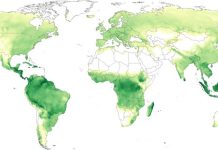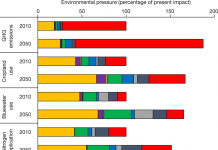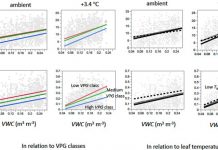Perspective: Karen M. Shell. Constraining Cloud Feedbacks. Science 2012 338(6108): 755-756. DOI: 10.1126-science.1231083.
Despite decades of improvements in computer models of Earth’s climate estimates of the climate sensitivity—the change in global average surface air temperature in response to a doubling of carbon dioxide concentration—remain uncertain (1). Much of the uncertainty results from radiative feedbacks that amplify or dampen climate changes. Particular attention has been given to the cloud feedback. Global warming is expected to change the cloud cover but these changes and their effects on global temperature are very difficult to predict. On page 792 of this issue Fasullo and Trenberth (2) present an observational test of the cloud feedback based on satellite measurements of relative humidity (RH) in cloud-free subtropical regions. The authors focus on environmental conditions that are easier to observe than the cloud properties themselves.
Report: John T. Fasullo* Kevin E. Trenberth. A Less Cloudy Future: The Role of Subtropical Subsidence in Climate Sensitivity. Science 2012 338(6108): 792-794. DOI: 10.1126-science.1227465.
Abstract
An observable constraint on climate sensitivity based on variations in mid-tropospheric relative humidity (RH) and their impact on clouds is proposed. We show that the tropics and subtropics are linked by teleconnections that induce seasonal RH variations that relate strongly to albedo (via clouds) and that this covariability is mimicked in a warming climate. A present-day analog for future trends is thus identified whereby the intensity of subtropical dry zones in models associated with the boreal monsoon is strongly linked to projected cloud trends reflected solar radiation and model sensitivity. Many models particularly those with low climate sensitivity fail to adequately resolve these teleconnections and hence are identifiably biased. Improving model fidelity in matching observed variations provides a viable path forward for better predicting future cli







